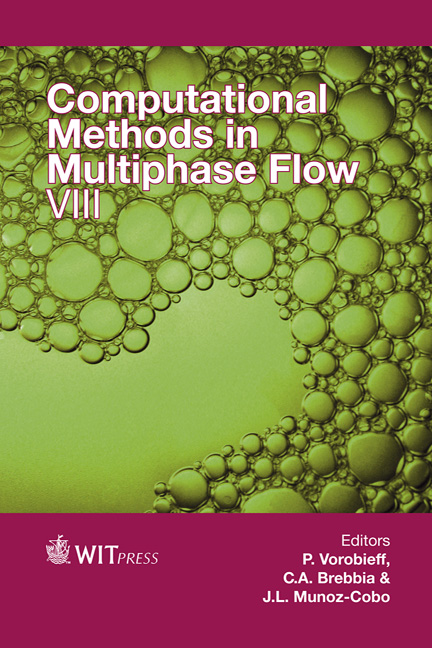Prediction Of The Fraction Of Water Bypassed To ECBD Due To Interaction Of Air Crossflow
Price
Free (open access)
Transaction
Volume
89
Pages
9
Page Range
215 - 223
Published
2015
Size
960 kb
Paper DOI
10.2495/MPF150191
Copyright
WIT Press
Author(s)
Y. S. Bang, D. H. Yoon
Abstract
An interaction of a jet-shaped subcooled water flow with a lateral steam flow in saturated and/or superheated state can be found at the downcomer of the reactor vessel of nuclear power plants during the reflood phase of loss-of-coolant-accident (LOCA). These phenomena may increase the amount of water bypassed toward the break outside the vessel and may have an impact on peak cladding temperature which is one of the key safety parameters of the reactor safety, especially for the plants which has an emergency core cooling system (ECCS) injected to the reactor vessel downcomer directly (DVI). A device ‘ECBD (ECCS core barrel duct)’, a duct which is attached to the core barrel wall and has a horizontal opening for the ECC water jet incoming and an vertical outlet to the lower part of the downcomer, has been proposed in the advanced ECCS design to improve the adverse effect of ECC water bypass. The present study aims at predicting the phenomena using computational fluid dynamic (CFD) analysis based on the simple air–water duct experiment and the interaction with a gas in terms of the fraction of water bypassing the ECBD. The assumed velocities of the air and the water are ranged to be close to the actual accident situation. To simulate the air–water two-phase flow, the homogeneous model considering the surface tension and volume fraction at each phase is used. The effect of turbulence during the interaction, the SST turbulence model is used. From the result of the CFD calculation, the form loss factor at the opening of the ECBD is derived for a reasonable calculation of the one-dimensional two-phase system code to be used in the accident analysis.
Keywords
computational fluid dynamics, cross flow, direct vessel injection, emergency core barrel duct





